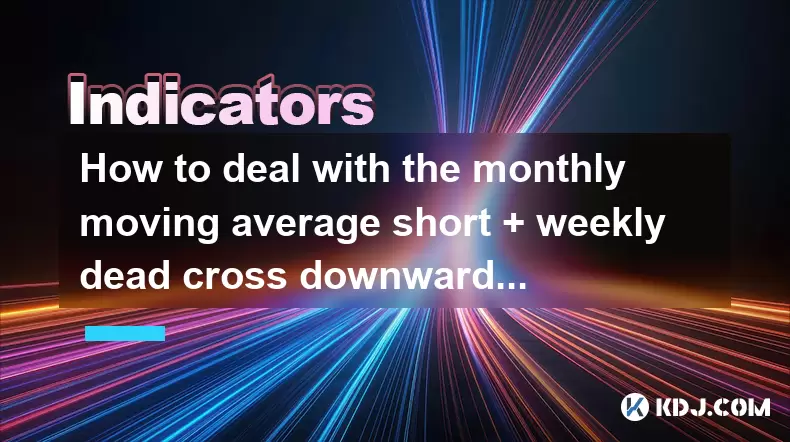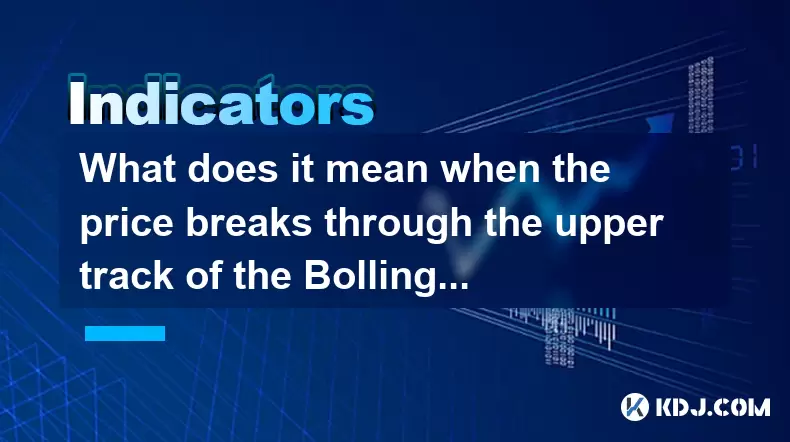-
 Bitcoin
Bitcoin $117500
-0.66% -
 Ethereum
Ethereum $3760
-1.24% -
 XRP
XRP $3.087
-2.54% -
 Tether USDt
Tether USDt $0.9999
-0.01% -
 BNB
BNB $803.6
-4.03% -
 Solana
Solana $180.3
-4.15% -
 USDC
USDC $0.9998
-0.01% -
 Dogecoin
Dogecoin $0.2218
-4.92% -
 TRON
TRON $0.3366
3.71% -
 Cardano
Cardano $0.7785
-3.73% -
 Hyperliquid
Hyperliquid $42.90
-4.75% -
 Sui
Sui $3.797
-7.45% -
 Stellar
Stellar $0.4165
-2.32% -
 Chainlink
Chainlink $17.65
-4.17% -
 Bitcoin Cash
Bitcoin Cash $561.0
-3.86% -
 Hedera
Hedera $0.2611
-4.54% -
 Avalanche
Avalanche $24.33
-7.02% -
 UNUS SED LEO
UNUS SED LEO $8.972
0.06% -
 Litecoin
Litecoin $107.6
-2.79% -
 Toncoin
Toncoin $3.254
-1.84% -
 Shiba Inu
Shiba Inu $0.00001306
-4.69% -
 Ethena USDe
Ethena USDe $1.001
0.00% -
 Uniswap
Uniswap $10.10
-4.83% -
 Polkadot
Polkadot $3.902
-4.63% -
 Monero
Monero $315.1
-2.57% -
 Dai
Dai $1.000
0.02% -
 Bitget Token
Bitget Token $4.499
-2.53% -
 Pepe
Pepe $0.00001145
-7.38% -
 Cronos
Cronos $0.1479
6.07% -
 Aave
Aave $281.3
-4.07%
How to deal with the monthly moving average short + weekly dead cross downward + daily line pullback 10-day line?
A monthly MA short, weekly dead cross, and daily 10-day pullback together signal strong bearish momentum, ideal for high-probability short entries with confluence.
Jul 29, 2025 at 02:56 pm

Understanding the Monthly Moving Average Short Signal
When traders refer to a monthly moving average short signal, they are typically observing a bearish alignment on the monthly chart, often when the price closes below the 20-month simple moving average (SMA) or the 12-month exponential moving average (EMA). This long-term indicator suggests a shift in the broader market trend from bullish to bearish. The significance of this signal lies in its time frame — monthly data filters out noise and reflects sustained sentiment. A confirmed close beneath the monthly moving average can indicate that institutional and long-term investors are exiting positions.
To validate this signal, traders should check whether the moving average has acted as resistance after the price crosses below it. Rejection at the moving average on retests strengthens the bearish case. It's also useful to examine volume patterns during the breakdown — increasing volume on downward candles adds credibility. Importantly, this signal should not be traded in isolation. It serves as a backdrop for assessing lower time frame setups, such as weekly and daily indicators, to time entries with higher precision.
Interpreting the Weekly Dead Cross Downward
A weekly dead cross downward occurs when the 50-week moving average crosses below the 200-week moving average on the weekly chart. This is a major bearish indicator, often signaling the start of a prolonged downtrend. The 200-week MA represents the long-term trend, while the 50-week MA reflects the intermediate trend. When the faster average drops below the slower one, momentum shifts decisively to the downside.
To confirm the dead cross, ensure the crossover is clear and sustained — a single week’s close below is not enough. Traders should wait for at least two consecutive weekly closes beneath the 200-week MA. Also, check for confluence with other indicators such as the weekly MACD turning negative or the relative strength index (RSI) breaking below 50. These confirmations increase the reliability of the signal. Given the weight of the weekly time frame, this setup often precedes extended bear markets or deep corrections, especially when aligned with a negative monthly structure.
Analyzing the Daily 10-Day Line Pullback
After a downtrend has been established by higher time frame signals, a pullback to the 10-day moving average on the daily chart can present a high-probability shorting opportunity. The 10-day MA acts as dynamic resistance in a bearish environment. When price approaches it from below and fails to close above, it indicates that sellers are still in control.
To trade this pullback effectively:
- Wait for the price to approach the 10-day EMA or SMA on the daily chart.
- Confirm that the moving average is sloping downward, reinforcing the bearish bias.
- Look for bearish candlestick patterns such as shooting stars, bearish engulfing bars, or pin bars at the touchpoint.
- Ensure volume increases on down candles during the rejection.
- Use the high of the rejection candle as a stop-loss level.
This setup works best when the higher time frames (monthly and weekly) are already bearish, turning the 10-day pullback into a retest of resistance rather than a potential reversal.
Integrating the Three Signals into a Trading Plan
Combining the monthly moving average short, weekly dead cross, and daily 10-day pullback creates a multi-timeframe bearish confluence. This alignment suggests that all trend layers — long, intermediate, and short-term — are synchronized to the downside.
To execute a trade based on this setup:
- Confirm the monthly close below the 20-month SMA.
- Verify the 50-week MA has crossed under the 200-week MA and remains below.
- Monitor the daily chart for price moving toward the 10-day MA after a down move.
- Enter short on a bearish rejection candle at the 10-day MA.
- Place a stop-loss just above the high of the rejection candle or above the 10-day MA.
- Target the previous swing low or use a risk-reward ratio of at least 1:2.
Risk management is crucial. Position size should reflect the volatility of the asset and the distance to the stop-loss. Traders may also consider scaling out of the position at multiple targets to lock in profits.
Tools and Indicators to Enhance Signal Accuracy
To increase confidence in this bearish setup, integrate additional technical tools:
- Use the daily MACD to confirm weakening momentum — look for the signal line to remain above the MACD line.
- Apply the volume-weighted average price (VWAP) on the daily chart; if price struggles to move above VWAP during the pullback, it supports the short case.
- Monitor on-chain data for cryptocurrencies such as exchange inflows or whale movements, which may confirm distribution.
- Use Ichimoku Cloud on the daily chart — if the price is below the cloud and the cloud is red and descending, it adds confirmation.
- Check funding rates on perpetual futures; negative or increasingly negative funding can indicate bearish sentiment in crypto markets.
These tools do not replace the core moving average structure but serve as filters to reduce false signals.
Frequently Asked Questions
What if the price closes above the 10-day moving average during the pullback?
If the price closes clearly above the 10-day MA on the daily chart, the short setup is invalidated. This could indicate short-term buyer interest or a temporary pause in the downtrend. Traders should avoid entering new short positions until the price re-finds selling pressure and moves back below the average.
Can this strategy be applied to all cryptocurrencies?
Yes, this multi-timeframe moving average strategy can be applied to major cryptocurrencies like Bitcoin (BTC) and Ethereum (ETH), as well as liquid altcoins. However, low-volume or low-cap tokens may exhibit erratic price action that distorts moving averages, making the signals less reliable.
How do I adjust the moving averages for different trading styles?
For more aggressive traders, using the 9-day EMA instead of the 10-day on the daily chart can provide earlier signals. Conservative traders might require the pullback to also retest the 21-day or 50-day MA for added confirmation. The weekly and monthly settings should remain unchanged to preserve the integrity of the long-term trend.
Is it necessary to wait for all three signals to align before acting?
While not mandatory, waiting for alignment significantly improves the probability of a successful trade. Acting on a daily pullback without confirmation from the weekly or monthly time frames increases the risk of counter-trend trading. Patience for full confluence enhances edge and consistency.
Disclaimer:info@kdj.com
The information provided is not trading advice. kdj.com does not assume any responsibility for any investments made based on the information provided in this article. Cryptocurrencies are highly volatile and it is highly recommended that you invest with caution after thorough research!
If you believe that the content used on this website infringes your copyright, please contact us immediately (info@kdj.com) and we will delete it promptly.
- Bitcoin Price Drop: Navigating the Dip with Corporate Strategies
- 2025-07-30 07:30:12
- BNB's Bullish Cycle: ChatGPT Weighs In on the Future
- 2025-07-30 06:50:12
- XRP's Wild Ride: Open Interest, Price Crash Fears, and What's Next
- 2025-07-30 07:50:12
- SEC Greenlights In-Kind Creations: A Game Changer for Bitcoin ETPs?
- 2025-07-30 07:50:12
- Arbitrum (ARB) Price Prediction: Navigating the Ups and Downs of the Best ETH Eco
- 2025-07-30 06:50:12
- Ethereum, Ruvi AI, Presale: The Next Big Thing in Crypto?
- 2025-07-30 07:30:12
Related knowledge

What does it mean when the EMA combination crosses upward for the first time after sideways trading?
Jul 28,2025 at 03:43pm
Understanding the EMA and Its Role in Technical AnalysisThe Exponential Moving Average (EMA) is a widely used technical indicator in cryptocurrency tr...

What does it mean when the price breaks through the upper track of the Bollinger Band but the RSI is overbought?
Jul 30,2025 at 03:35am
Understanding Bollinger Bands and Their Upper TrackBollinger Bands are a widely used technical analysis tool developed by John Bollinger. They consist...

What signal does the ROC send when it rises rapidly from a low level and breaks through the zero axis?
Jul 27,2025 at 10:15am
Understanding the Rate of Change (ROC) IndicatorThe Rate of Change (ROC) is a momentum-based oscillator used in technical analysis to measure the perc...

What does it mean when the moving averages are glued together and a gap appears?
Jul 29,2025 at 07:49pm
Understanding Moving Averages in Cryptocurrency TradingMoving averages are among the most widely used technical indicators in the cryptocurrency tradi...

What does it mean when TEMA breaks through the long-term downward trend line?
Jul 29,2025 at 02:50pm
Understanding the Role of Smart Contracts in Decentralized Finance (DeFi)Smart contracts are self-executing agreements with the terms of the agreement...

What does it mean when the price breaks through the double bottom neckline and the moving averages are arranged in a bullish pattern?
Jul 28,2025 at 10:57am
Understanding the Double Bottom PatternThe double bottom is a widely recognized reversal chart pattern in technical analysis, particularly within the ...

What does it mean when the EMA combination crosses upward for the first time after sideways trading?
Jul 28,2025 at 03:43pm
Understanding the EMA and Its Role in Technical AnalysisThe Exponential Moving Average (EMA) is a widely used technical indicator in cryptocurrency tr...

What does it mean when the price breaks through the upper track of the Bollinger Band but the RSI is overbought?
Jul 30,2025 at 03:35am
Understanding Bollinger Bands and Their Upper TrackBollinger Bands are a widely used technical analysis tool developed by John Bollinger. They consist...

What signal does the ROC send when it rises rapidly from a low level and breaks through the zero axis?
Jul 27,2025 at 10:15am
Understanding the Rate of Change (ROC) IndicatorThe Rate of Change (ROC) is a momentum-based oscillator used in technical analysis to measure the perc...

What does it mean when the moving averages are glued together and a gap appears?
Jul 29,2025 at 07:49pm
Understanding Moving Averages in Cryptocurrency TradingMoving averages are among the most widely used technical indicators in the cryptocurrency tradi...

What does it mean when TEMA breaks through the long-term downward trend line?
Jul 29,2025 at 02:50pm
Understanding the Role of Smart Contracts in Decentralized Finance (DeFi)Smart contracts are self-executing agreements with the terms of the agreement...

What does it mean when the price breaks through the double bottom neckline and the moving averages are arranged in a bullish pattern?
Jul 28,2025 at 10:57am
Understanding the Double Bottom PatternThe double bottom is a widely recognized reversal chart pattern in technical analysis, particularly within the ...
See all articles

























































































